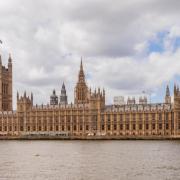Palace of Westminster

Located in London, the Palace of Westminster is the meeting place of the United Kingdom's Parliament. With more than 1000 years of history, the palace have been an important place for the political life of the English, Great Britain, the British Empire and the world, first as a residence for the monarchs and since the 13th century for the Parliament. The original building suffer damages on a fire in 1512, and was finally destroyed by a second fire on 1834 (except for some structures, including the Westminster Hall, which was added to the new building). After that the new Place was built between 1840 and 1870, and still exist nowadays.
Sources:
Riding, J. (2005). A palace for Parliament. All Change at the Palace of Westminster. BBC History.
UK Parliament Living Heritage. (2025). The Palace of Westminster. UK Parliament, website: The Palace of Westminster - UK Parliament
Image by Terry Ott used under a CCA 2.0 Generic License, image size was modified to fit better on the article.
Coordinates
Longitude: -0.124475955963

